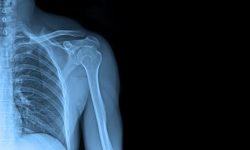 Scientists recently achieved a breakthrough in stem cell research with the successful transformation of stem cells into bone cells via specifically programmed materials. Using shape-memory polymers and dynamic scaffolds, researchers were able to make this discovery possible.
Scientists recently achieved a breakthrough in stem cell research with the successful transformation of stem cells into bone cells via specifically programmed materials. Using shape-memory polymers and dynamic scaffolds, researchers were able to make this discovery possible.
Stem cells are known to be incredibly malleable, since they have the potential to transform into a variety of different cell types. Scientists have been able to control and direct this transformation process by altering the environment around them. This research is being used in tissue engineering which helps regenerate or repair damaged tissues with substitutes materials mainly via static scaffolds.
Researchers engineered a polymer sheet with the remarkable ability to morph in response to temperature changes. By creating grids on its underside and regulating the stretch as temperatures varied, they employed this artificial muscle’s dynamic movement to synchronise signals from two distinct stimuli. These were physical change of temperature and mechanical stimulus which then prompted stem cells to seed onto it into forming bone tissue.
The polymer actuator sheet possesses an incredible shape-memory function that acts like a transducer, allowing it to effectively instruct cells what to do. By combining changes in temperature with the repeated stretching motion of the film, the experiments showed successful differentiation into bone cells from stem cells.
These advanced polymer sheets can be used to treat bones damaged beyond the body’s ability to heal naturally. During an operation, stem cells from a patient’s bone marrow could span across these programmed membranes and wrap around destroyed bones. This would than act as reinforcements while adapting their function like they had been previously trained.
This new development could mean revolutionary advancements in medical treatments.
To view the original scientific study click below:
Polymeric sheet actuators with programmable bioinstructivity





